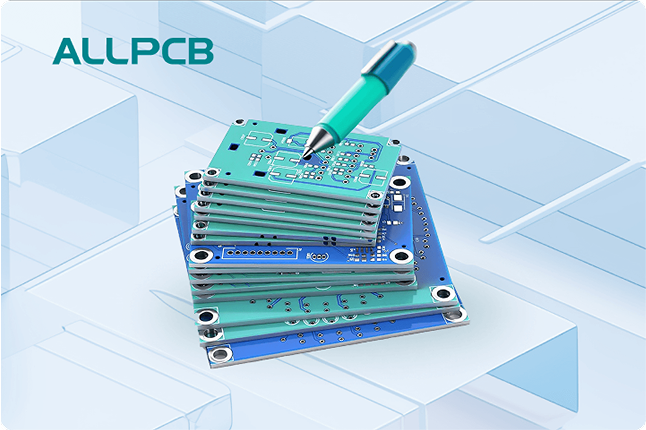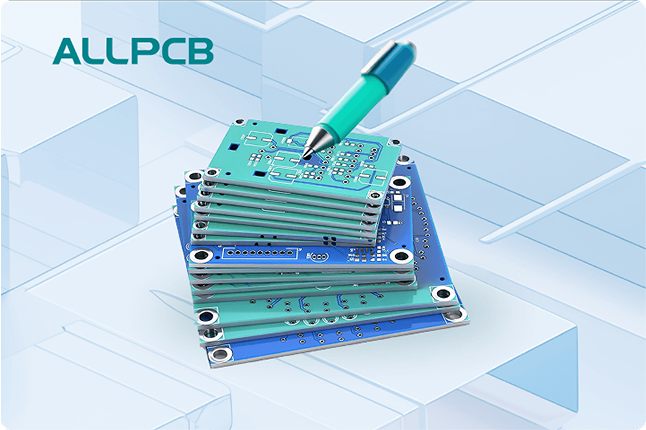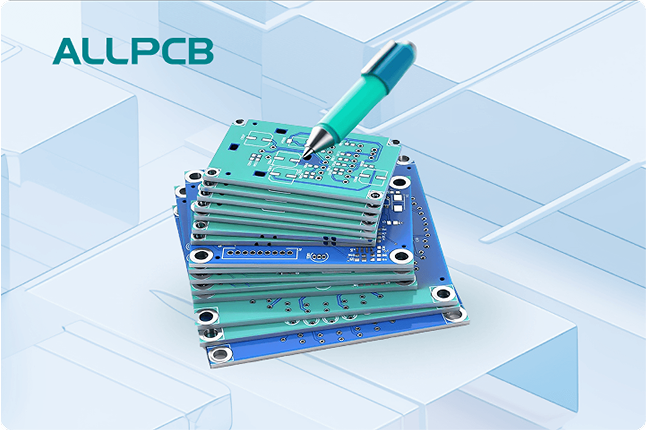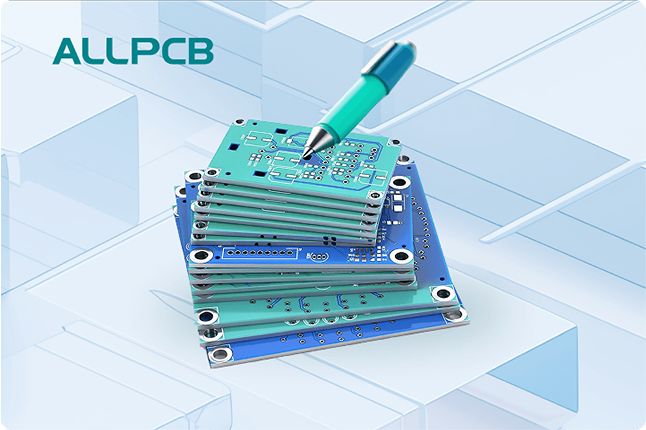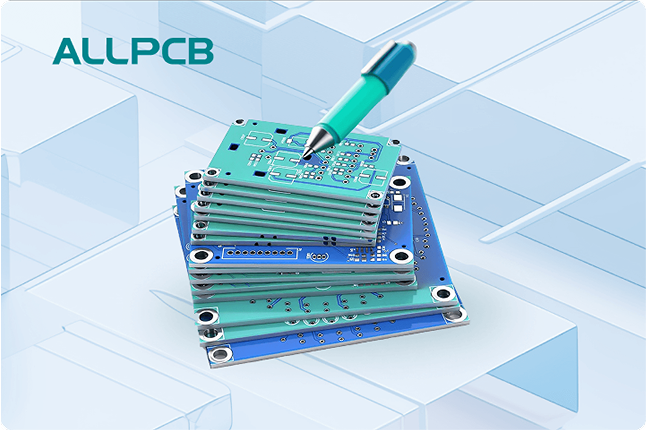If you're new to PCB design and wondering how to go from a simple idea to a fully manufactured board, you're in the right place. This guide will walk you through the process of creating a printed circuit board (PCB) from schematic to Gerber files, step by step. Whether you're searching for "easy PCB design software," "PCB design for beginners step by step," or an "online PCB design tutorial," this comprehensive resource will help you understand the essentials and get started with confidence.
Designing a PCB can seem daunting at first, but with the right tools and approach, it becomes a manageable and rewarding task. In this blog, we'll cover everything from understanding the basics of PCB design to creating schematics, laying out your board, and generating the files needed for manufacturing. Let's dive into the world of PCB design and turn your ideas into reality with ALLPCB as your trusted partner.
What Is PCB Design and Why Does It Matter?
PCB design is the process of creating a layout for a printed circuit board, which serves as the foundation for electronic devices. A PCB connects components like resistors, capacitors, and microcontrollers through conductive traces, ensuring they work together to perform a specific function. From smartphones to medical devices, PCBs are at the heart of modern electronics.
For beginners, PCB design matters because it transforms a theoretical circuit into a physical, functional product. A well-designed PCB ensures reliability, reduces noise (like electromagnetic interference), and optimizes space. Poor design, on the other hand, can lead to issues like signal loss or overheating. By learning the basics, you can avoid common pitfalls and create efficient, cost-effective boards.
Step 1: Understanding the Basics of PCB Design
Before jumping into software or tools, it's important to grasp the fundamental concepts of PCB design. A PCB consists of several layers, including copper traces for conductivity, a substrate for structure, and a solder mask for protection. The design process involves two main stages: creating a schematic (a blueprint of your circuit) and laying out the physical board.
Start by familiarizing yourself with key terms:
- Schematic: A diagram showing how components are connected electrically.
- Footprint: The physical layout of a component on the PCB.
- Traces: Copper lines that connect components.
- Vias: Small holes that connect traces between different layers of the board.
Understanding these elements will help you avoid mistakes when you start designing. For instance, incorrect trace widths can lead to insufficient current carrying capacity, causing overheating. A general rule of thumb for beginners is to use a trace width of at least 10 mils (0.010 inches) for low-current signals and 20-30 mils for power lines carrying up to 1 amp.
Step 2: Choosing Easy PCB Design Software for Beginners
One of the first hurdles for beginners is selecting the right tools. Thankfully, there are several user-friendly options for "easy PCB design software" that cater to those just starting out. Look for software with intuitive interfaces, free versions, and strong community support. Many platforms also offer online tutorials to guide you through the process.
Popular choices often include open-source tools that allow you to design schematics and layouts without a steep learning curve. These tools typically come with libraries of components, so you don’t have to create footprints from scratch. Additionally, some software offers cloud-based features, making it easy to access your designs from anywhere—an ideal feature for those seeking an "online PCB design tutorial."
When choosing software, ensure it supports exporting Gerber files, the standard format used by manufacturers like ALLPCB to produce your board. Also, check if it includes design rule checks (DRC) to catch errors like overlapping traces or incorrect spacing before manufacturing.
Step 3: Creating Your First Schematic
Now that you’ve chosen your software, it’s time to create a schematic as part of "PCB design for beginners step by step." A schematic is like a roadmap for your circuit, showing how components are connected without worrying about their physical placement.
Follow these steps to create your schematic:
- Define Your Circuit: Decide on the components you need, such as resistors, capacitors, and ICs. For example, a simple LED circuit might include a 220-ohm resistor and a 5V power source.
- Add Components: Use your software’s library to place components on the schematic sheet. Label each component for clarity (e.g., R1 for resistor 1).
- Connect Components: Draw wires to connect the components based on your circuit logic. Ensure there are no open connections.
- Check for Errors: Use the software’s error-checking tool to verify that all connections are correct and no components are missing.
A well-organized schematic reduces errors during the layout phase. For instance, in a circuit with a microcontroller, ensure that power pins are connected to the correct voltage (often 3.3V or 5V) and ground pins are properly tied to GND to avoid signal issues.
Step 4: Transitioning from Schematic to PCB Layout
Once your schematic is complete, the next step in this "PCB design for beginners step by step" guide is to convert it into a physical layout. This is where you decide the actual placement of components and the routing of traces on the board.
Here’s how to approach the layout:
- Import the Schematic: Most software will automatically generate a layout area with components based on your schematic. These components will initially be unplaced.
- Place Components: Arrange components logically. For example, place power components near the input and group related parts (like a microcontroller and its capacitors) close together to minimize trace length.
- Route Traces: Draw copper traces to connect components. Keep traces as short as possible to reduce signal delay and noise. For high-speed signals, aim for trace lengths under 1 inch to avoid timing issues.
- Add Power and Ground Planes: Use copper pours for power and ground to provide stable voltage and reduce interference. Ensure a ground plane covers at least 70% of the board for better noise reduction.
During routing, maintain a clearance of at least 8 mils between traces to prevent short circuits. If your design involves multiple layers, use vias to connect traces between layers, but keep via count low to reduce manufacturing costs.
Step 5: Running Design Rule Checks (DRC)
Before finalizing your design, run a Design Rule Check (DRC) using your software. This step is crucial in "PCB design for beginners step by step" to catch errors that could lead to manufacturing issues. DRC verifies that your layout meets specific rules, such as minimum trace width, spacing, and via size.
For example, if your trace width is below the manufacturer’s minimum (often 6 mils for standard processes), the DRC will flag it. Similarly, it will alert you if components are placed too close to the board edge, risking damage during production. Fix any errors flagged by the DRC to ensure your design is manufacturable.
Step 6: Generating Gerber Files for Manufacturing
The final step in turning your design into a physical board is generating Gerber files. These files are the industry standard for PCB manufacturing, containing all the information about your board’s layers, traces, and drill holes.
To generate Gerber files:
- Export Layers: In your software, select the option to export Gerber files. This will create separate files for each layer (e.g., top copper, bottom copper, solder mask).
- Include Drill Files: Export the drill file, which specifies the location and size of holes for vias and mounting.
- Review Files: Use a Gerber viewer (many are available online for free) to double-check that all layers align correctly and no data is missing.
Once your Gerber files are ready, you can upload them to ALLPCB’s online platform for a quick quote and manufacturing. Ensure your files match the manufacturer’s specifications, such as a minimum hole size of 0.3mm for standard drilling, to avoid delays.
Step 7: Tips for a Successful First PCB Design
As a beginner, your first PCB design might not be perfect, but these tips can help you succeed:
- Start Simple: Begin with a basic circuit, like an LED blinker, to learn the process before tackling complex designs.
- Double-Check Connections: Verify every connection in your schematic and layout to avoid open circuits or shorts.
- Use Grid Snaps: Enable grid snapping in your software to align components and traces neatly, improving readability and reducing errors.
- Consider Board Size: Keep your board small (e.g., under 50mm x 50mm for prototypes) to minimize costs during manufacturing.
- Leverage Tutorials: Use available resources like an "online PCB design tutorial" to learn specific features of your chosen software.
By following these tips, you’ll build confidence and improve your skills with each project. Remember, even experienced designers encounter challenges, so patience and practice are key.
Common Mistakes to Avoid in PCB Design
As a beginner, it’s easy to make mistakes that can affect your PCB’s performance or manufacturability. Here are some common pitfalls and how to avoid them:
- Ignoring Trace Widths: Using traces that are too narrow for the current can cause overheating. Use a trace width calculator to ensure traces can handle the expected load (e.g., 20 mils for 1A at 12V).
- Poor Component Placement: Placing components randomly can lead to long traces and signal issues. Group related components together to keep traces short.
- Forgetting Ground Planes: Without a proper ground plane, your circuit might suffer from noise. Dedicate a layer or large area to ground for stability.
- Skipping DRC: Failing to run a design rule check can result in unmanufacturable boards. Always perform DRC before exporting files.
By being mindful of these issues, you can save time and avoid costly redesigns. Partnering with a reliable manufacturer like ALLPCB also helps, as they often provide design reviews to catch errors before production.
Why Choose ALLPCB for Your PCB Manufacturing?
Once your design is ready, choosing the right manufacturing partner is critical. ALLPCB offers a seamless experience for beginners and professionals alike. With fast turnaround times, competitive pricing, and high-quality production, you can trust that your design will be brought to life with precision.
ALLPCB also provides online tools to upload your Gerber files, review your design, and get instant quotes. Their support team is available to assist with any questions, ensuring that even first-time designers feel confident throughout the process.
Conclusion: Start Your PCB Design Journey Today
Designing a PCB from schematic to Gerber files is a journey that combines creativity and technical skill. By following this "PCB design for beginners step by step" guide, using "easy PCB design software," and exploring an "online PCB design tutorial," you’ve taken the first steps toward creating your own electronic projects. Remember to start small, learn from each design, and leverage the resources and support available through platforms like ALLPCB.
Whether you’re building a hobby project or prototyping for a larger product, PCB design opens up endless possibilities. Upload your first design to ALLPCB today and see your ideas come to life on a professionally manufactured board. Happy designing!
 ALLPCB
ALLPCB


